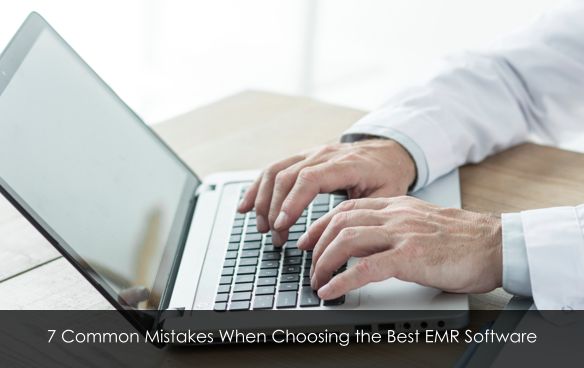Selecting the right Electronic Medical Records (EMR) software system is critical for streamlining workflows, enhancing patient care, and maintaining data security. The best EMR software solutions are powerful tools that simplify clinical processes and can greatly increase operational efficiency. However, selecting the wrong kind of EHR system can lead to a health IT system that’s a hindrance instead.
Finding the right EMR/EHR solution that enhances efficiency (rather than the opposite) requires careful attention to detail, as many common pitfalls could lead to costly/ineffective decisions or ultimately worse patient outcomes. We’ll be diving into some key mistakes that medical practices should avoid when looking for the right EMR software system:
The 7 Most Common Mistakes When Choosing the Best EMR Software
1. Skipping a Needs Assessment
Before jumping in and grabbing any off-the-shelf EMR software solution, it’s necessary to thoroughly evaluate practice requirements. Failing to outline must-have features, such as appointment scheduling, e-prescribing, or robust reporting, can result in a feature set that doesn’t align with actual needs. Consider specialty-specific templates and documentation workflows, such as enhanced SOAP notes tailored for mental health, pediatrics, or surgical practices, etc., as most Electronic Health Records (EHR) systems are not a “one-size-fits-all” solution. Be sure to identify pain points in your current system and prioritize functionalities that would solve them.
2. Relying Solely on User Reviews
User reviews can provide valuable insights, but relying solely on them can be misleading. Every practice operates differently, and there are many different factors to take into account. For example, users who are more tech literate than others would have an easier time learning a more complicated EMR software.
An EHR software system that’s perfect for one person or practice may be less suited for another. Use reviews as supplementary information rather than the sole deciding factor, and focus on objective evaluations.
3. Ignoring Scalability
It’s easy to get excited about an electronic medical records solution that ticks all the checkboxes, but don’t forget to consider the growth potential of a healthcare practice. Ignoring scalability could mean having to replace your EMR system down the road, which could be costly. The most robust EMR software systems can grow alongside practices, whether that means adding new locations, specialties, or staff members.
4. Overlooking Interoperability
An EMR software should integrate seamlessly with other tools, such as medical billing software or lab systems, otherwise, workflows can become more cumbersome than necessary. A common mistake is to neglect interoperability, despite the many benefits this provides for clinicians. Prioritize EHR systems that facilitate smooth data exchange with other platforms to maximize efficiency.
Look for systems that support interoperability standards like FHIR (Fast Healthcare Interoperability Resources) to ensure future-proof data exchange. Some EHR software systems with interoperability include: athenaOne by athenaHealth & Epic EHR Software (which are among the strongest for interoperability in the U.S), and eClinicalWorks (for smaller organizations and outpatient practices).
5. Underestimating the Importance of Training and Support
Even the most user-friendly EMR system will require training and ongoing support. A common mistake is not verifying the vendor’s support services for the installation process. Be sure to choose an EMR software provider that offers comprehensive onboarding, training, and responsive customer support for a smoother implementation. As well as that, ensure support services extend beyond initial training, including help with software updates and troubleshooting after implementation.
6. Focusing Only on Cost
While budget constraints are important, focusing exclusively on cost can lead to regrets. A cheaper EMR system may lack essential features, while an expensive one might include unnecessary bells and whistles. Furthermore, it’s common to overlook something included in a package (like training). It’s important to find a balance between cost and functionality, ensuring the best bang for the buck.
7. Rushing
Time is valuable, but rushing the decision-making process can result in an EMR system that doesn’t work well and, worse, can ruin morale among practice staff. A practice will need time to adjust, and trying to rush the process will ultimately leave a practice in a worse position than before.
Take the time to communicate with staff, engage key stakeholders early, explore the options, and analyze the pros and cons to ensure smoother adoption and greater satisfaction. Additionally, consider investing in change management to ensure a smooth transition for the practice and staff. A thoughtful approach ensures that the system you choose truly aligns with your practice’s goals.
Conclusion
An EMR software solution can be a game-changer for a healthcare practice, but when finding the right pick, it’s important to be pragmatic and strategic. By avoiding common mistakes, healthcare practices can easily find an EMR system that enhances efficiency, patient care, and ensures long-term success.








